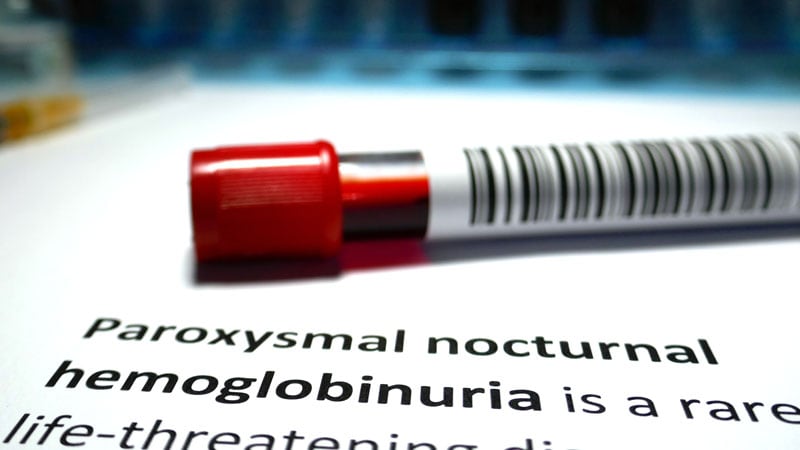TOPLINE:
Breakthrough hemolysis (BTH) occured in 10%-15% of patients with paroxysmal nocturnal hemoglobinuria (PNH) over 6 months with eculizumab, crovalimab, and pegcetacoplan, while frequency dropped to less than 5% with ravulizumab, iptacopan, and danicopan plus anti-C5. Patient features, particularly suboptimal response to previous complement inhibitors, were linked to BTH risk.
METHODOLOGY:
- Researchers analyzed BTH definition, frequency, and severity across phase 3 clinical trials with terminal complement inhibitors (ravulizumab and crovalimab) and upstream complement inhibitors (pegcetacoplan, iptacopan, and danicopan).
- Analysis included ALXN 301/302, COMMODORE 1/2, PRINCE, PEGASUS, APPOINT/APPLY, and ALPHA trials evaluating various complement inhibitors in PNH patients.
- Primary endpoints varied across trials, with ravulizumab and crovalimab studies focusing on LDH reduction, while pegcetacoplan, iptacopan, and danicopan trials targeted hemoglobin increase and transfusion reduction.
TAKEAWAY:
- Long-term follow-up revealed increased BTH frequency with pegcetacoplan (24% at 1 year) compared to anti-C5, iptacopan, and double inhibition with danicopan plus anti-C5.
- Transfusions were required in approximately 50% of BTH cases, with treatment modifications including early anti-C5 dosing and addition of eculizumab for patients on proximal inhibitors.
- Complement amplifying conditions were identified in about 50% of cases, with infections being the most frequent trigger.
- Treatment adherence, schedule optimization, anticoagulant prophylaxis, and education of patients and physicians were identified as crucial factors in preventing BTH and its complications.
IN PRACTICE:
“Treatment adherence, optimization of the administration schedule, anticoagulant prophylaxis, as well as education of patients and physicians remain important factors to prevent BTH and its complications,” the authors of the study wrote.
SOURCE:
The study was led by Bruno Fattizzo, Fondazione Istituto di Ricovero e Cura a Carattere Scientifico Ca’ Granda Ospedale Maggiore Policlinico in Milan, Italy. It was published online in Blood.
LIMITATIONS:
According to the authors, the absence of prespecified criteria for clinical severity of BTH across clinical trials limited the ability to compare BTH frequency and severity among different studies. Additionally, the heterogeneous definitions of BTH used in early phase trials prevented direct comparison of BTH occurrence across different therapeutic approaches.
DISCLOSURES:
Fattizzo reported relationships with Agios, Alexion, Janssen, Novartis, Roche, Samsung, Sobi, and Zenas BioPharma. The study was partially funded by the Italian Ministry of Health, Current Research Grant.
This article was created using several editorial tools, including AI, as part of the process. Human editors reviewed this content before publication.
Source link : https://www.medscape.com/viewarticle/can-new-drugs-better-control-breakthrough-hemolysis-2025a1000khb?src=rss
Author :
Publish date : 2025-08-01 08:56:00
Copyright for syndicated content belongs to the linked Source.
